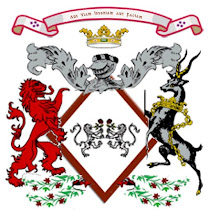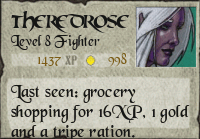 Image from a St. Andrew's Day Prayer Card
Image from a St. Andrew's Day Prayer CardYou might take note that I was in world for about 10 minutes yesterday afternoon and found that the first snow has fallen in Loch Avie. Many of the tress still have their colorful leaves, but the first hint at the winter to come has visited my home.
I am busily preparing for a number of events in SL (as posted previously) - happily so. But today, as most of the RL family has departed my typist's home, it is time to pause and think about the day.
I am Christian as most of you know (as is my typist) although I preserve several of the traditions of my Pagan ancestors. Today is a new year on the Christian calendar. A time for preparation. For waiting. This is the first Sunday of Advent. Songs fill my heart as I go about my preparations (especially in real life).
Today is also St. Andrew's Day and how appropriate that I would be singing as he is patron to singers (much like St. Cecilia). He is also patron of fishermen, gout, maidens, anglers, sore throats, and unmarried women.
He was the first apostle and went through life leading people to Jesus, both before and after the Crucifixion. Missionary in Asia Minor and Greece, and possibly areas in modern Russia and Poland. Martyred on an saltire (x-shaped) cross, he is said to have preached for two days from it.
Some peculiar marriage-related superstitions have attached themselves to Saint Andrew's feast day:
- An old German tradition says that single women who wish to marry should ask for Saint Andrew's help on the Eve of his feast, then sleep naked that night; they will see their future husbands in their dreams.
- Another says that young women should note the location of barking dogs on Saint Andrew's Eve: their future husbands will come from that direction.
- On the day after Andrew's feast, young people float cups in a tub; if a boy's and a girl's cup drift together and are intercepted by a cup inscribed "priest", it indicates marriage.
There are several explanations for why Andrew became the patron of Scotland and you will find that information in my post from last year written prior to my St. Andrew's Day celebration.
So cuddle up with your loved one by the fire, sip some whisky, and enjoy the warmth of the season upon us.
I will see you soon.






